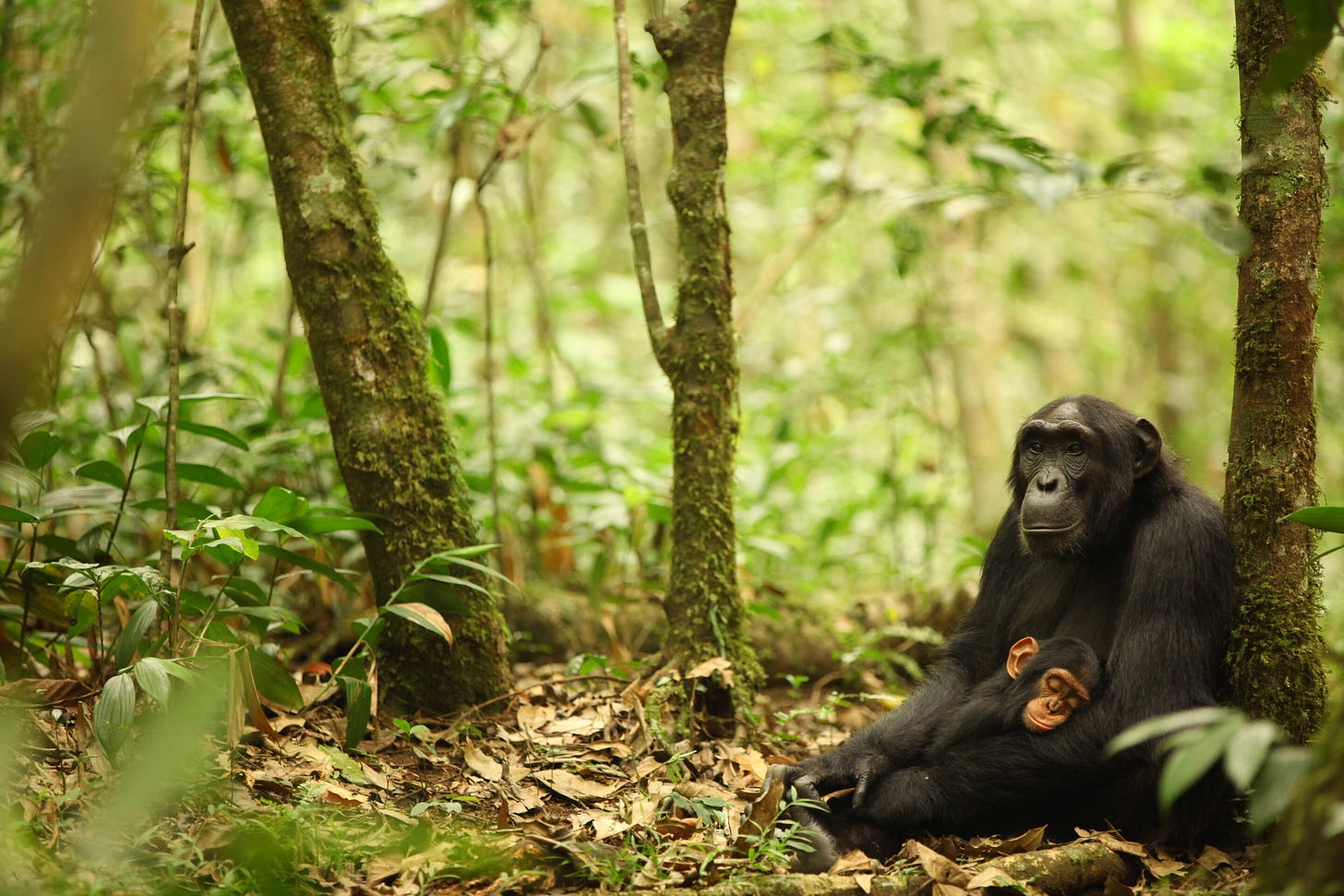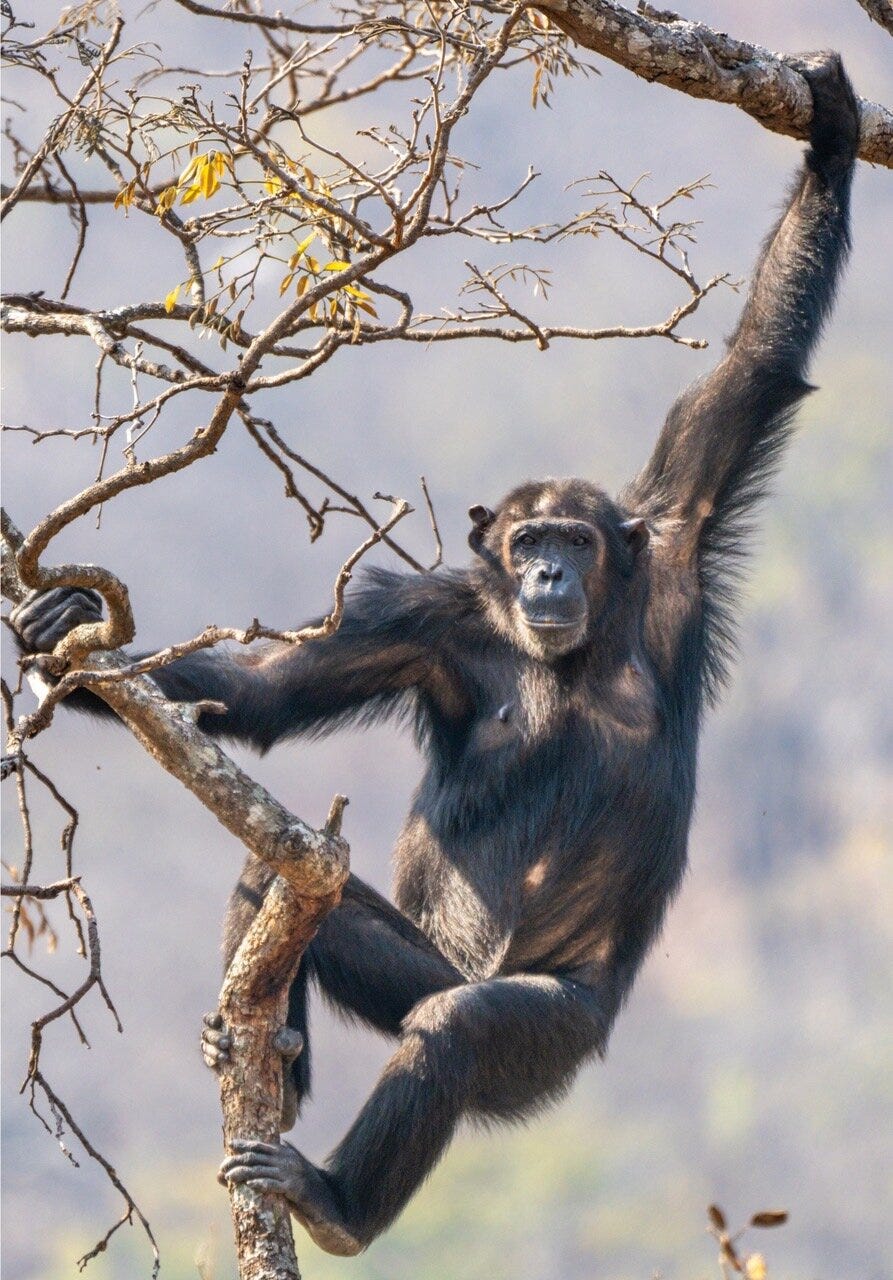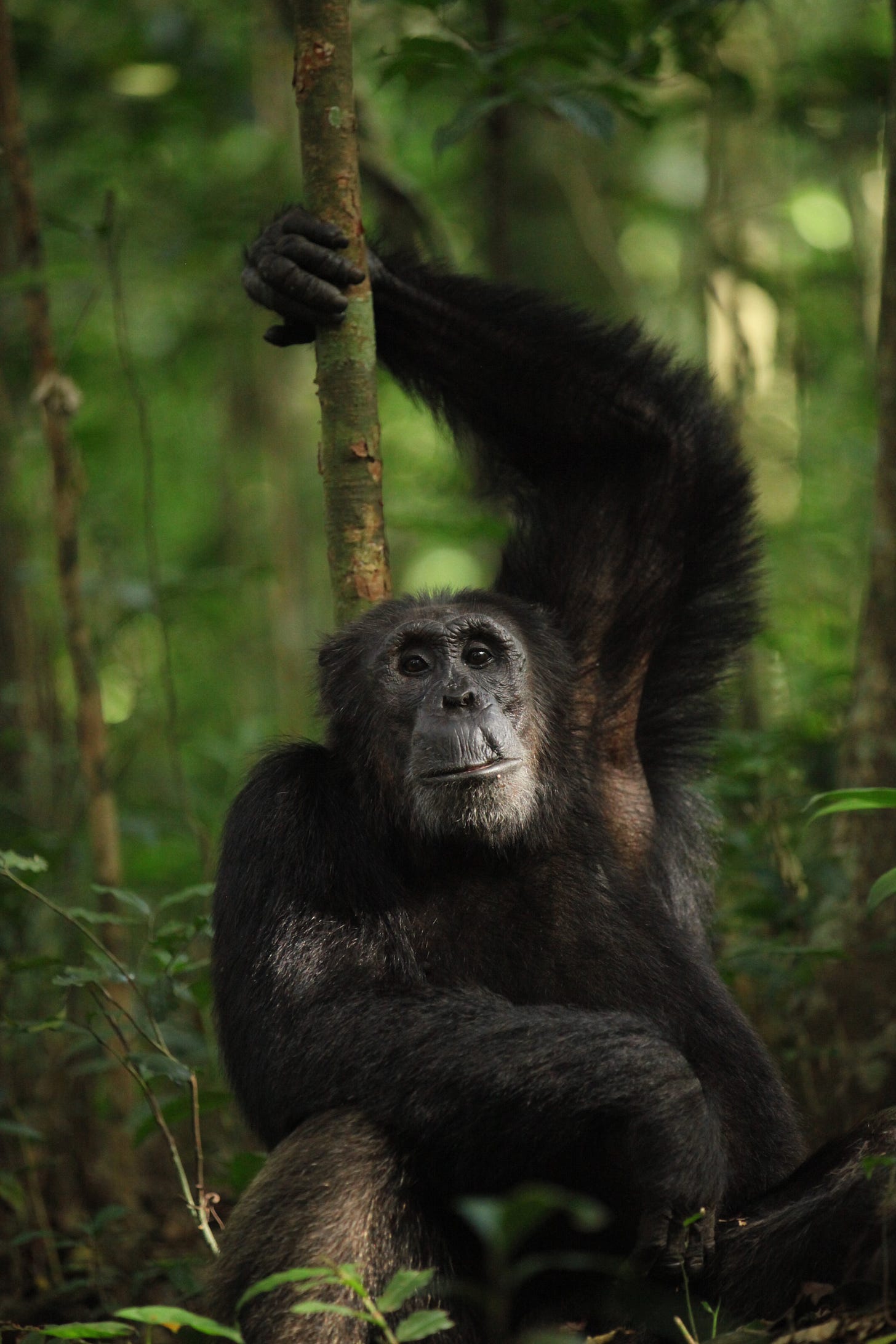Chimpanzees Adapted to Local Habitats, Study Finds
Genetic Insights Shed Light on Chimpanzee Survival and Evolution

Chimpanzees, our closest relatives, live across diverse habitats in Africa, from dense tropical forests to open savannas. A recent study led by researchers at University College London (UCL) reveals that these populations have evolved genetic adaptations to their unique environments, including mechanisms that protect against diseases like malaria. Published in Science1, the study offers insights into how genetic diversity has helped chimpanzees thrive despite environmental challenges.
Adapting to a Changing World
Chimpanzees share more than 98% of their DNA with humans, making them vital for understanding human evolutionary history and biology. Unlike other apes, which live exclusively in forests, chimpanzees have adapted to a variety of landscapes, each presenting unique environmental and ecological pressures.
“There are just a few hundred thousand chimpanzees alive, but they are found across very different landscapes,” said Professor Aida Andrés, the study’s lead author. “This makes them unique, as no other apes inhabit such varied environments.”
The research highlights the importance of conserving genetic diversity among chimpanzees to ensure their resilience in the face of climate change and habitat loss.
Non-Invasive Genetic Sampling
Studying wild chimpanzees poses unique challenges, especially since they are endangered and elusive. The researchers collected DNA using fecal samples gathered as part of the Pan African Program: The Cultured Chimpanzee (PanAf), a collaborative effort spanning 30 populations across the chimpanzee range.
By analyzing the protein-coding portions of the genome (exomes) from 828 chimpanzees, the team identified genetic variants strongly associated with specific habitats.
This study represents the largest analysis of local adaptation in wild endangered mammals to date.
Malaria Resistance in Forest Chimpanzees
One of the most striking findings was evidence of genetic adaptations in forest-dwelling chimpanzees to combat malaria, a significant threat in pathogen-rich environments.
“The strongest evidence of adaptation was found in genes linked to malaria,” explained Dr. Harrison Ostridge, the study’s first author.
Genes such as GYPA and HBB, which are also linked to malaria resistance in humans, showed signs of independent adaptations in chimpanzees. The parallels between human and chimpanzee evolution underscore the limited genetic pathways available for developing resistance to malaria.
Surviving in the Savanna
Chimpanzees living in open savannas, characterized by high temperatures, low rainfall, and limited food, exhibited genetic traits that likely help them withstand these harsh conditions. Studying these adaptations may offer clues to how early human ancestors transitioned from forests to savannas millions of years ago.
“This research on savanna chimpanzees helps us understand the challenges faced by human ancestors when they began inhabiting similar environments,” said Andrés.
Collaborative Efforts and Future Directions
The study exemplifies the power of international collaboration, with contributions from institutions across Africa, Europe, and North America. Non-invasive methods, such as fecal sampling, highlight the potential for further research without disturbing endangered species.
Dr. Mimi Arandjelovic of the Max Planck Institute encouraged public engagement:
“We welcome everyone interested in our research to contribute as community scientists at ChimpandSee.org, where one can help annotate videos collected alongside the genetic samples.”
Looking ahead, the findings may inform conservation strategies, helping protect chimpanzees as climate and land-use changes continue to reshape their habitats.
Related Research
**Hernandez-Aguilar, R. A., et al. (2021). “Chimpanzee Savanna Ecology.” International Journal of Primatology.
DOI: 10.1007/s10764-021-00217-9**Sarai, D. S., et al. (2019). “Genetic Variation and Pathogen Adaptation in Primates.” Nature Genetics.
DOI: 10.1038/s41588-019-0503-4**Boesch, C., et al. (2017). “Chimpanzee Health and Conservation.” Biological Conservation.
DOI: 10.1016/j.biocon.2017.04.020
By bridging genetics, ecology, and anthropology, this research offers a deeper understanding of chimpanzees’ resilience and underscores the importance of protecting their diverse populations.
Ostridge, H. J., Fontsere, C., Lizano, E., Soto, D. C., Schmidt, J. M., Saxena, V., Alvarez-Estape, M., Barratt, C. D., Gratton, P., Bocksberger, G., Lester, J. D., Dieguez, P., Agbor, A., Angedakin, S., Assumang, A. K., Bailey, E., Barubiyo, D., Bessone, M., Brazzola, G., … Andrés, A. M. (2025). Local genetic adaptation to habitat in wild chimpanzees. Science (New York, N.Y.), 387(6730). https://doi.org/10.1126/science.adn7954

 vigna
vigna 








